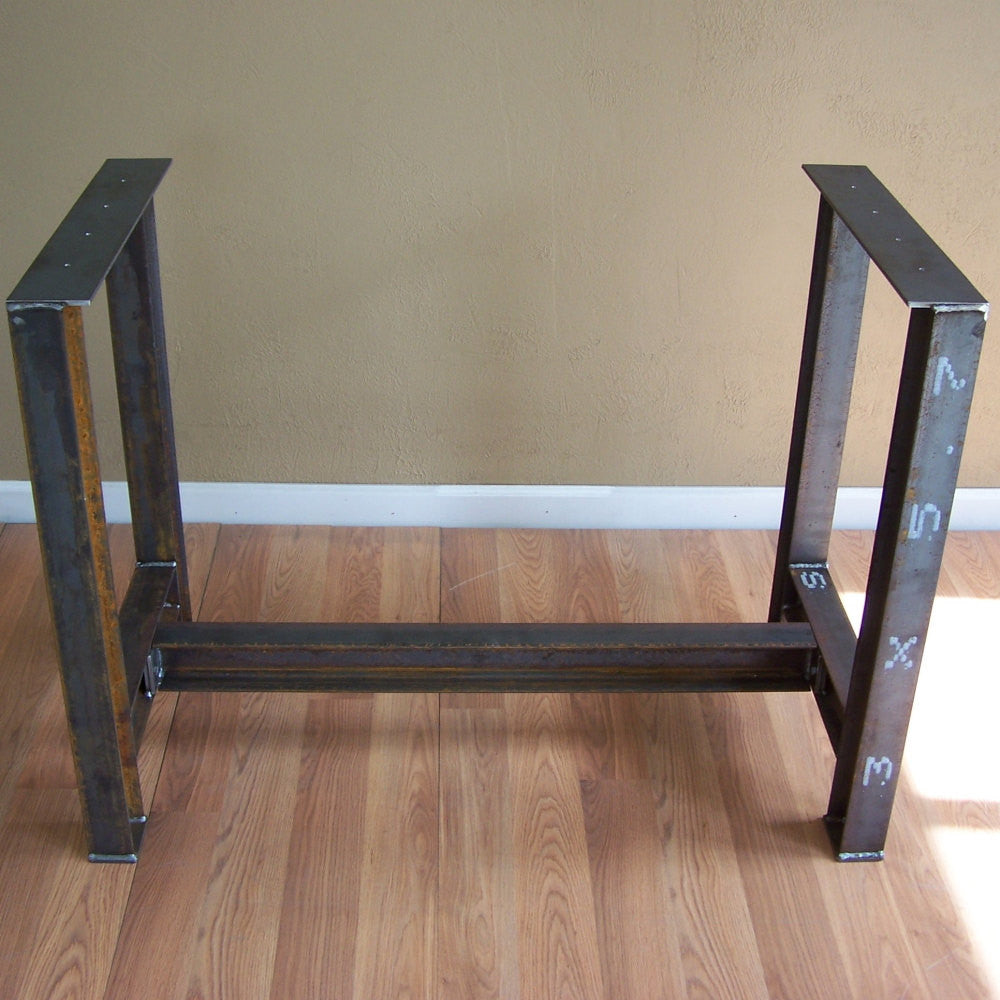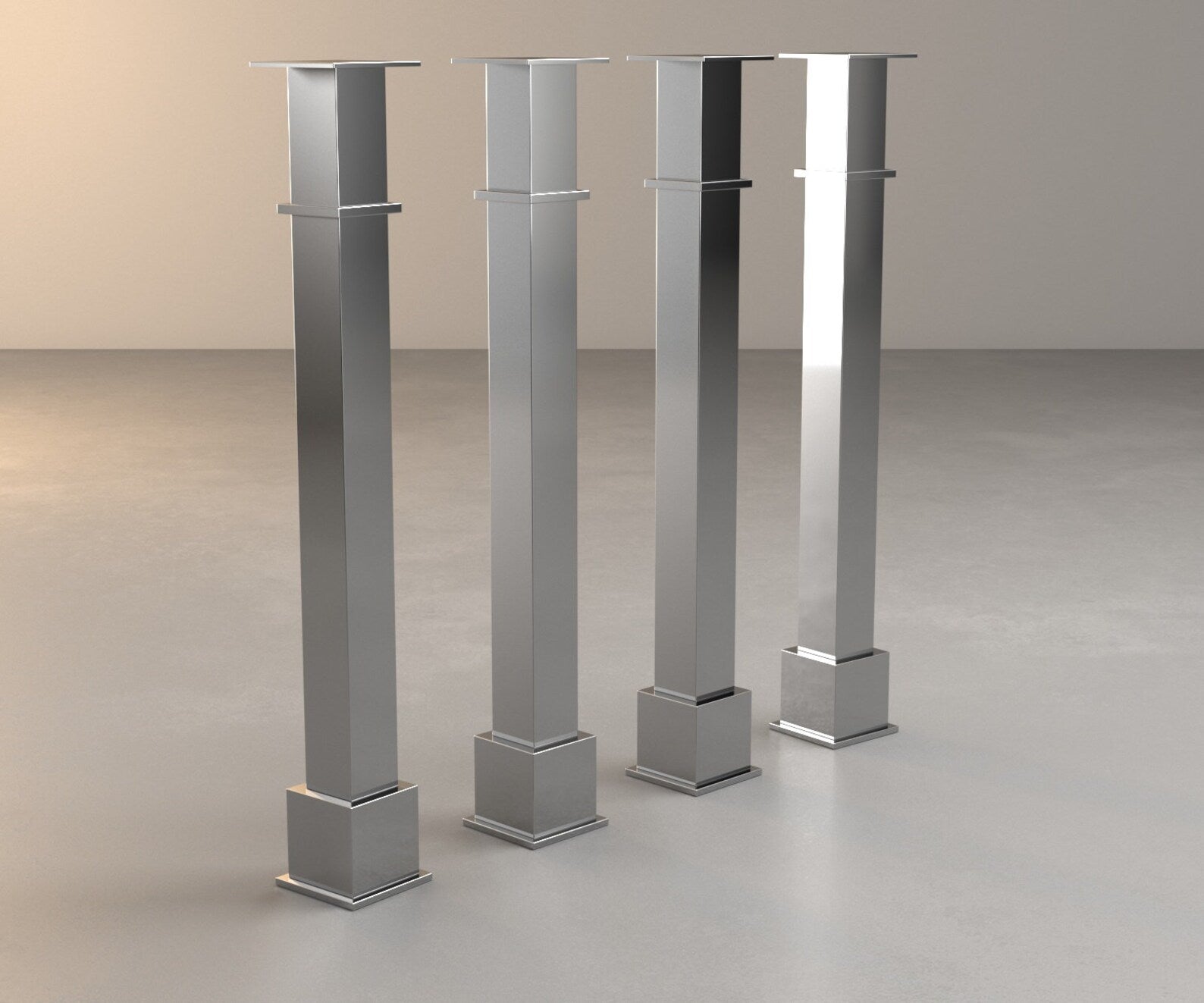Trick Considerations for Finding the most effective Legs For Cooking Area Island for Your Style
When choosing the perfect legs for your kitchen island, numerous crucial considerations enter into play that can dramatically affect both functionality and visual appeals. The selection of height, design, and material should align with your total kitchen layout to make sure an unified look. Additionally, security and upkeep demands are crucial for lasting use and simplicity of care. Comprehending these factors can improve your cooking area's functionality and aesthetic appeal, yet the nuances of each consideration can commonly be neglected. What effects might these choices have on your kitchen's total ambience?
Determine Your Design Preference
Establishing your design preference is important when choosing the excellent legs for your kitchen island. The legs of your cooking area island not just offer a useful objective yet additionally add dramatically to the total visual of the room. Consequently, recognizing your layout style-- be it modern-day, rustic, typical, or commercial-- is necessary.
For a modern cooking area, think about sleek, minimalistic legs that enhance clean lines and open spaces. Typical kitchen areas frequently prefer turned or luxuriant legs, which can add a touch of elegance and class.
In addition, consider the height and percentage of the legs in connection with the island's surface. This makes certain the visual balance and capability necessary for day-to-day use. Examining the existing elements in your kitchen area, such as cabinets and home appliances, can additionally guide your decision, making certain cohesiveness in design. Ultimately, your design choice will certainly influence not only the option of legs however additionally the overall harmony of your kitchen's style.
Select the Right Material
Choosing the ideal product for your kitchen area island legs is essential in making certain both durability and aesthetic appeal. Various materials offer distinct benefits, and the choice frequently shows your style choices and practical demands.
Wood is a prominent choice, offering warmth and versatility. It can be stained or painted to match your cooking area decor, making it versatile to numerous designs, from rustic to modern. Nevertheless, wood may call for normal maintenance to preserve its appearance and honesty.

If you seek a special touch, consider acrylic or glass materials. They can produce an impression of space and lightness in your cooking area, making them a superb choice for smaller locations - Legs For Kitchen Island. Nonetheless, these options may need mindful handling and maintenance to avoid scratches.
Inevitably, the product you choose ought to line up with your kitchen area's total layout, ensuring that the legs serve both practical and ornamental objectives.
Take Into Consideration Height and Proportions
When making a kitchen island, elevation and percentages play a crucial role in making certain functionality and comfort,. The basic height for a kitchen island generally ranges from 36 to 42 inches, aligning with conventional counter elevations or bar elevations, specifically. This dimension is important for harmonizing with surrounding feceses and counter visit tops, enabling ease of usage throughout meal preparation and social communications.
Additionally, the island's percentages should enhance the general kitchen design. Consider the proportion between the island's size and length, guaranteeing it provides ample surface area without crowding the cooking area.
Furthermore, the elevation of the legs or base can influence the aesthetic appeal and performance. Taller legs may provide an extra contemporary, airy feeling, while much shorter ones can evoke a typical, grounded look. Ultimately, very carefully considering height and percentages will lead to a cooking area island that is both functionally efficient and aesthetically appealing, improving the general layout of the space.
Assess Security and Durability
A kitchen area island's legs have to not just complement its height and percentages yet also offer ample security and resilience to support day-to-day activities. The legs are important to the total capability of the island, as they bear the weight of the countertop and any extra lots, such as devices or food preparation tasks.
When evaluating security, it is critical to consider the leg design and material. For instance, durable metal or solid hardwood legs commonly supply premium toughness contrasted to lighter products like crafted timber or plastic. Furthermore, a broader base can improve stability, decreasing the risk of tipping or tottering throughout usage.
Toughness is similarly crucial; the legs must withstand wear and tear from everyday usage. Take into consideration surfaces that secure against scratches, damages, and dampness, particularly in a kitchen area environment. Examine the high quality of construction, such as fastenings and joints, which can significantly influence the legs' long-lasting efficiency.
Eventually, investing in well-crafted legs that focus on his comment is here security and toughness will guarantee your kitchen area island remains a trusted office for years ahead, enhancing your cooking experiences while maintaining visual appeal.
Consider Maintenance and Treatment
Maintenance and treatment are crucial factors to consider for guaranteeing the long life and performance of cooking area island legs. When selecting legs, it is important to assess the products used, as various alternatives need differing levels of upkeep. Wooden legs may call for regular refinishing or sealing to prevent moisture damage and scrapes, while metal legs might need regular polishing to keep their sparkle and avoid rust.
In addition, the coating put on the legs can influence maintenance requirements. A high-gloss layer may be simpler to tidy yet can show fingerprints and scratches quicker than a matte coating. It is advisable to choose materials and surfaces that match your way of living; for instance, if you regularly organize celebrations, select durable materials that can endure deterioration.
Furthermore, think about the cleaning process included in preserving these legs. Smooth surface areas commonly need very little initiative, while complex styles may build up dust and grime, necessitating more labor-intensive cleansing approaches. Legs For Kitchen Island. Inevitably, considering the upkeep and care required for your picked cooking area island legs will certainly not just improve their aesthetic appeal however likewise ensure their functional integrity with time
Verdict
Finally, choosing the ideal legs for a kitchen island necessitates mindful factor to consider of different factors, consisting of layout style, material selection, upkeep, height, and stability. Each aspect plays an important role in ensuring that the legs not just enhance the visual charm of the kitchen yet also give the needed support and longevity for daily use. A knowledgeable decision will eventually contribute to a useful and visually pleasing cooking area discover this environment.
The legs of your cooking area island not only offer a functional function but likewise add considerably to the total aesthetic of the room.Maintenance and care are critical considerations for making certain the durability and efficiency of kitchen island legs. Wooden legs might require regular refinishing or securing to prevent wetness damages and scratches, while metal legs might require regular brightening to keep their shine and stop corrosion.
Ultimately, factoring in the maintenance and treatment needed for your chosen kitchen island legs will certainly not just enhance their aesthetic charm yet also ensure their practical honesty over time.
